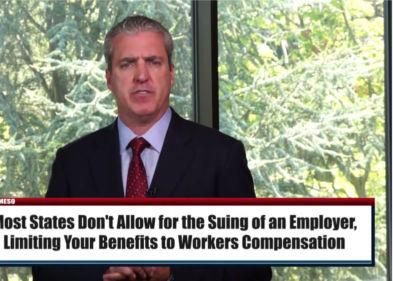Pharmeceutical Companies Hiding Medical Research - Reboxetine | Sayville Mass Tort
Edward Lake
Do Pharmaceutical Companies Hide Negative Test Results?
Today on You be the Judge. Do pharmaceutical companies have the ability to control which studies are published about their drugs? Can studies showing bad results be hidden? Are doctors being misled about the benefits of some drugs? Modern medicine has worked many wonders, and helped millions, perhaps billions of people worldwide. Due to the profitability of drug manufacturing, pharmaceutical companies are able to afford expensive, in-depth research, to develop new medications that save people from devastating and life-threatening health problems.
When drug makers seek to create new medicines, they fund extensive research and testing, before releasing the medications on the market. Doctors then rely on this research, to decide for themselves, whether the drug is suitable for their patients. As a patient, you are then given information to decide whether you are comfortable with the potential side effects. But there is a problem. Drug makers are the ones funding and conducting the studies that validate their products.
Research Disproving Pharmaceutical Claims
Award winning physician and writer, Dr. Ben Goldacre, has compiled extensive research by experts from around the world, into his most recent book, Bad Pharma. Dr. Goldacre explained that researchers outside of the pharmaceutical industry have been examining the studies provided by drug makers, and comparing the reported results, with those found in independently-funded trials. These researchers found that the industry-funded trials produced a significantly higher rate of favorable outcomes for their drugs, than did the trials that were funded independently.
Reboxetine Example
Here’s another example of how the flow of information is distorted. Reboxetine is an antidepressant used to treat depression, anxiety, panic disorders, and ADD/ADHD. At one point, it was considered to be one of the most effective drugs of its kind and was prescribed worldwide. Later, researchers gathered the data on all the trials ever conducted on Reboxetine. Dr. Goldacre shows that out of the seven trials comparing Reboxetine against a placebo, only one yielded a positive result, and this was the only one published in an academic journal. The other six trials, all using substantially larger samples of patients, showed that Reboxetine was no better than the placebo sugar pill. Many other studies on Reboxetine were never published, including those that showed its negative side effects maybe worse than other competing drugs.
Originally, doctors, including Dr. Goldacre, reviewed the published trials to determine if Reboxetine was effective and good for their patients, unaware of the other studies that found the drug to be non-beneficial. From a legal standpoint, drug makers are doing nothing wrong by withholding test results. But what do you think about this?
By: Edward Lake
Do Pharmaceutical Companies Hide Negative Test Results?
Today on You be the Judge. Do pharmaceutical companies have the ability to control which studies are published about their drugs? Can studies showing bad results be hidden? Are doctors being misled about the benefits of some drugs? Modern medicine has worked many wonders, and helped millions, perhaps billions of people worldwide. Due to the profitability of drug manufacturing, pharmaceutical companies are able to afford expensive, in-depth research, to develop new medications that save people from devastating and life-threatening health problems.
When drug makers seek to create new medicines, they fund extensive research and testing, before releasing the medications on the market. Doctors then rely on this research, to decide for themselves, whether the drug is suitable for their patients. As a patient, you are then given information to decide whether you are comfortable with the potential side effects. But there is a problem. Drug makers are the ones funding and conducting the studies that validate their products.
Research Disproving Pharmaceutical Claims
Award winning physician and writer, Dr. Ben Goldacre, has compiled extensive research by experts from around the world, into his most recent book, Bad Pharma. Dr. Goldacre explained that researchers outside of the pharmaceutical industry have been examining the studies provided by drug makers, and comparing the reported results, with those found in independently-funded trials. These researchers found that the industry-funded trials produced a significantly higher rate of favorable outcomes for their drugs, than did the trials that were funded independently.
Reboxetine Example
Here’s another example of how the flow of information is distorted. Reboxetine is an antidepressant used to treat depression, anxiety, panic disorders, and ADD/ADHD. At one point, it was considered to be one of the most effective drugs of its kind and was prescribed worldwide. Later, researchers gathered the data on all the trials ever conducted on Reboxetine. Dr. Goldacre shows that out of the seven trials comparing Reboxetine against a placebo, only one yielded a positive result, and this was the only one published in an academic journal. The other six trials, all using substantially larger samples of patients, showed that Reboxetine was no better than the placebo sugar pill. Many other studies on Reboxetine were never published, including those that showed its negative side effects maybe worse than other competing drugs.
Originally, doctors, including Dr. Goldacre, reviewed the published trials to determine if Reboxetine was effective and good for their patients, unaware of the other studies that found the drug to be non-beneficial. From a legal standpoint, drug makers are doing nothing wrong by withholding test results. But what do you think about this?
By: Edward Lake










